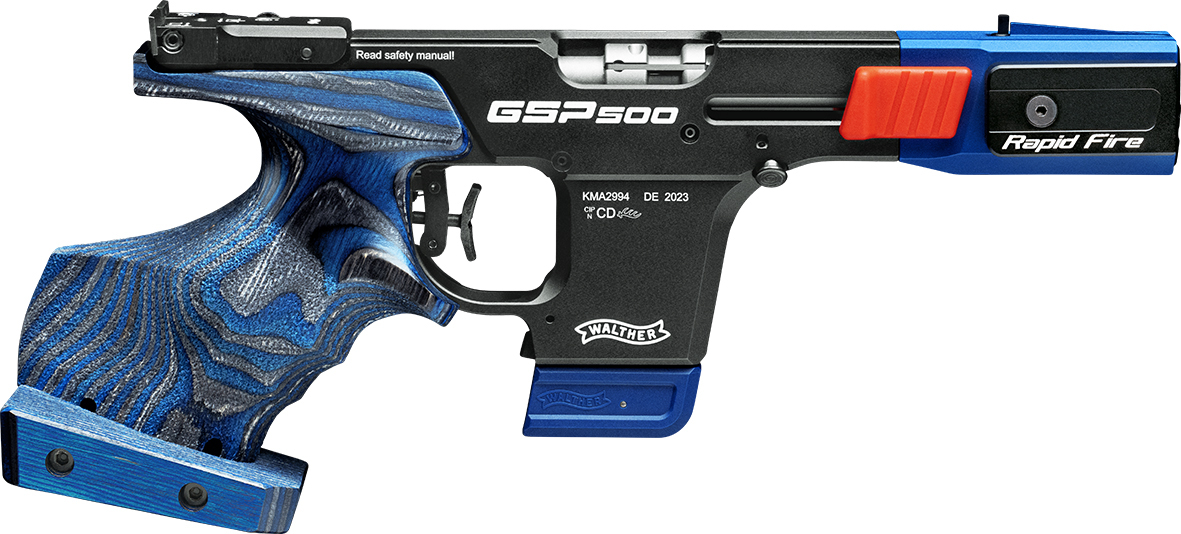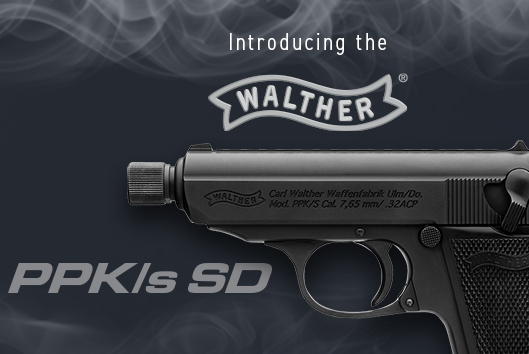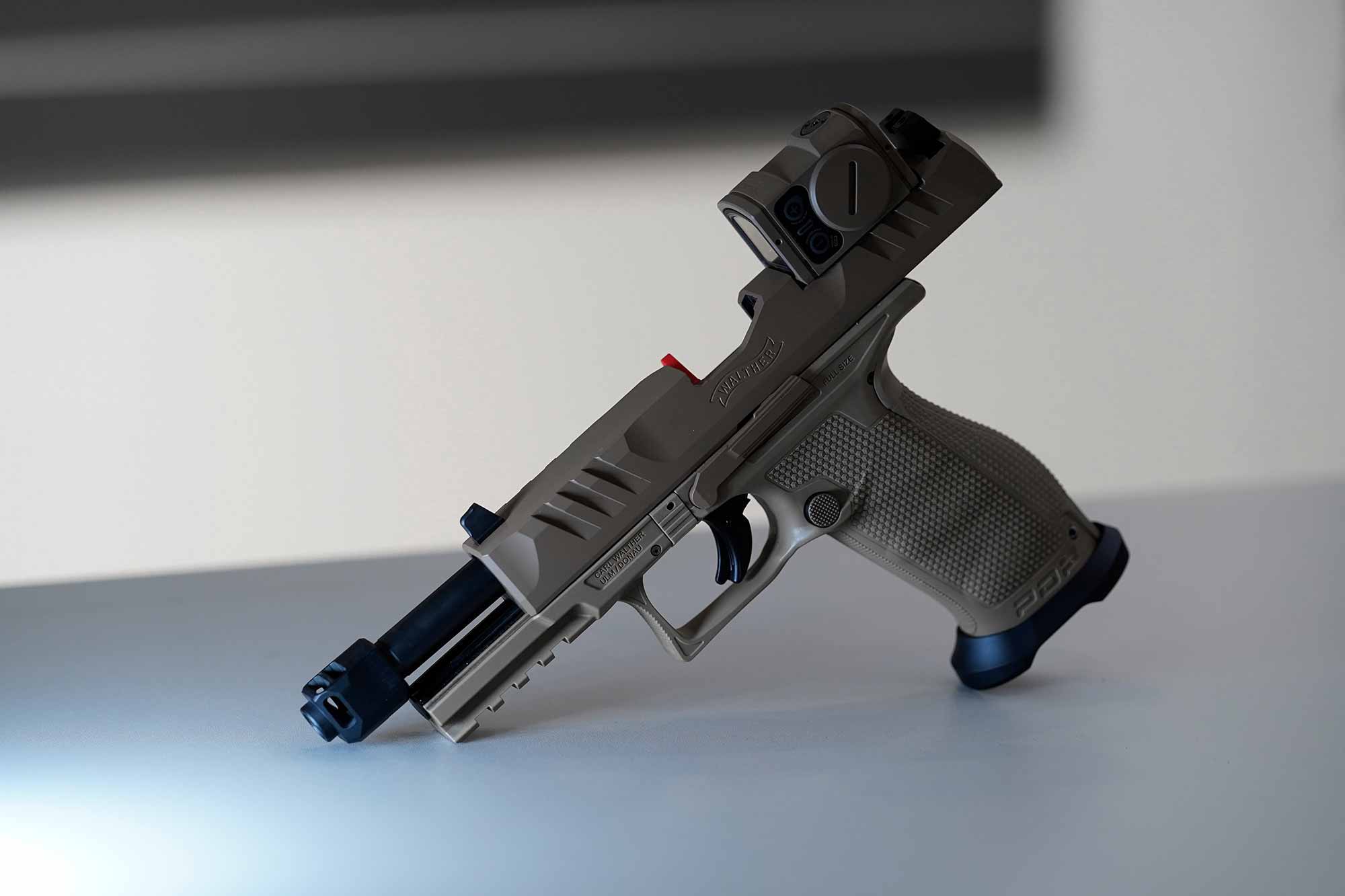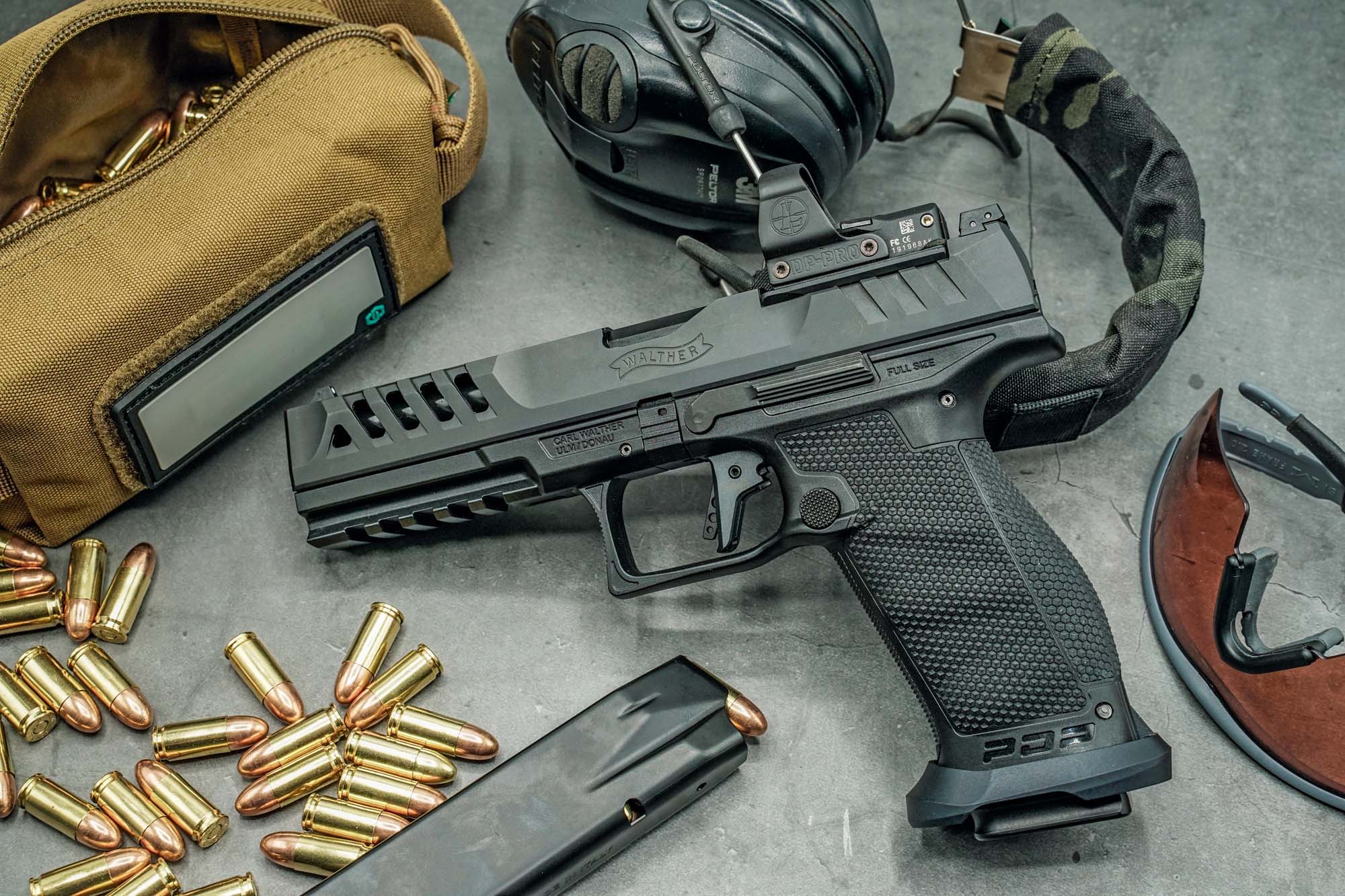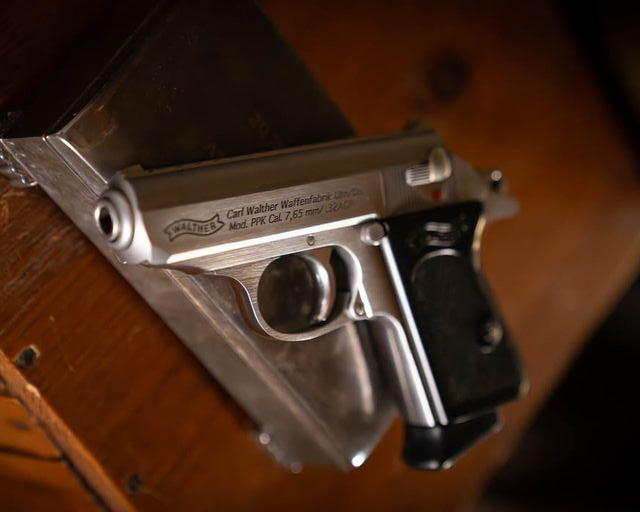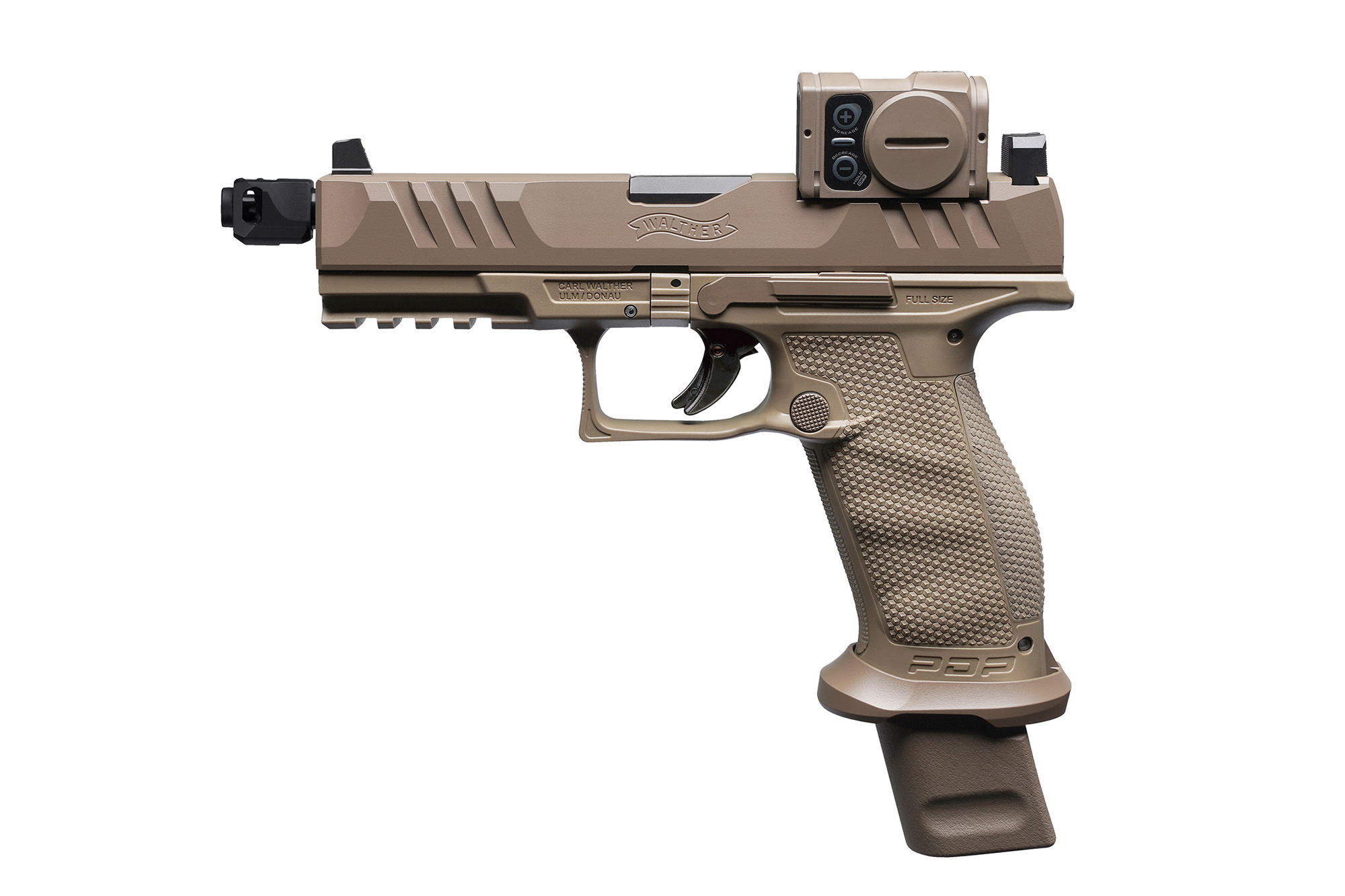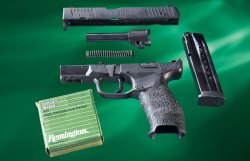
The
bobbed hammer of this 9mm pistol
sits inside the slide as long as the gun is not cocked. When the Walther Creed is loaded, the cock is flush with the rear face of the slide. Thus it also doubles as a cocking indicator. When firing, the hammer finally rotates backwards out of the slide for a moment by a good 8 mm, before moving forward towards the firing pin.
As with the PPX, the Creed features a Browning-Petter-SIG locking system.
It also has a pre-cocked trigger and the internal hammer just mentioned. Due to its construction, the pre-cocked double action trigger has the luxury of a rather low pull value for a double action, but of course it also has a handicap: if the shot doesn't get off, you can pull the trigger once or even several times again because – unlike a conventional non pre-cocked DA trigger – nothing will happen. The only thing that helps here is to manually pull the slide back again and let it jump forward. The three-part barrel assembly is striking: cartridge chamber and barrel form part 1, attached to it is the locking block (part 2), which is MIM manufactured and includes a polished feed ramp (part 3).
Walther Creed: technical data
|
Model:
|
Walther Creed
|
|
Price:
|
590
euro (price may vary in your country due to VAT and import duties)
|
| Caliber: |
9mm Luger (9x19
mm)
|
|
Magazine
capacity:
|
16 + 1 rounds
|
|
Barrel
length:
|
4”/ 102 mm
|
|
Dimensions
(LxWxH):
|
7.2
x 1.3 x 5.6 in (185 x 33 x 142 mm)
|
|
Trigger
pull weight:
|
80
oz / 2.270 g
|
|
Weight:
|
26.63
oz / 755 g
|
|
Notes:
|
polymer-framed,
hammer-fired pistol with pre-cocked trigger, internal hammer, three-dot steel
sights, drift-adjustable rear sight.
|
Testing the Carl Walther Creed
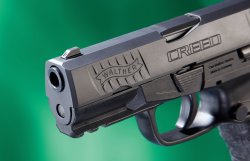
In the controls section on the workbench and on the firing line, it went like this for the Walther Creed: the top grouping circle was 2.2” / 57 mm (-10 points). It swallowed all the ammunition it was given without any objection. There were no conspicuous features to be noted in terms of functionality, either. So there was nothing to deduct in the "cycling/safety" test section (-0 p.). On the other hand, the testers registered a noticeable trigger creep in each of the 3 guns tested since the debut of the Creed model, combined with a slight overtravel. The trigger pull value for the 3 test samples checked was 2270, 2350 and 2500 g, which is significantly lower than the value specified by the manufacturer (2,900 g). But it has to compete with the usual striker-fired pistols, even if it's a partially pre-cocked DA system since there is a visibly working hammer. All in all, the determined values felt borderline (-2 p.). The grip of the Creed was good and well-thought out in terms of Walther design – it was also firm in the hand, but a tester found the grip texture too smooth (-1 p.).
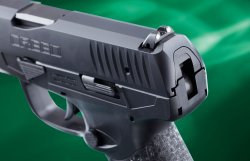
The Creed could be disassembled very easily: remove the magazine, safety check, lock the slide in the open position and rotate the triangular take-down lever on the left above the trigger downwards by 90 degrees. Then the slide including barrel and recoil spring assembly can be pulled forward and off the frame in the usual way. The arrangement of the other easy-to-use controls was also satisfactory, the magazine release button could be moved from the left to the right side – only with regards to the slide stop left-handers could have a tough time (-1 p.). The steel sights with their 3-dots offered a great picture and the possibility to quickly pick up their intended target. This was ensured by the square rear sight (0.18”/ 4.6 mm) and the front sight (0.14”/ 3.6 mm). The only downer: they are not height adjustable (-1 p.). The testers found minimal processing marks at the top of the slide, and at the bottom of the trigger guard there was a not very elegantly trimmed injection channel. Overall, in all testers' opinion the barrel and slide had too much play (-4 p.).
Walther Creed in 9mm: test results
|
Rating
|
Points
|
|
Accuracy
(max. 50 points)
|
40 points |
|
Cycling/safety
(max. 10 p.)
|
10 points |
| Trigger characteristics (max. 10 p.) | 8 points |
|
Grip
design (max. 5 p.)
|
4 points |
|
Controls
(max. 10 p.)
|
9 points |
|
Sights
(max. 5 p.)
|
4 points |
|
Fit
and finish (max. 10 p.)
|
6 points |
|
Total
points (max. 100 points)
|
81 points |
|
Test
result
|
Very
good
|
|
Rating
|
5 out of 6 |
Walther's 9mm polymer-framed pistol: wrap-up
Wrapping up: a sturdy gun, easy to use, with effective hitting power. In addition to that, it's inexpensive. All in all, a price/performance ratio that's just right. The Creed comes with a lockable case including two magazines and a user manual.
You can found more information about Walther's firearms on the
manufacturer's website
.
all4shooters.com already published tests of the following pistols:
- GLOCK 34 Gen5 MOS
- Walther Q5 Match SF Champion
- SIG Sauer P320 X-Five
- CZ P10 C Optics Ready
- Beretta M9A3
- Heckler & Koch SFP9 OR
- Ruger SR1911 Target
- SIG Sauer P365 sub-compact pistol
- Walther PPS M2
- STP Igel 6.0 LWD
- HS Produkt XDM-9 5.25
- Smith & Wesson M&P 9 Shield
- Heckler & Koch SP5K
- Ruger Security 9
- Walther PPQ M2 (SC) subcompact 9mm pistol
- Tanfoglio T97 Custom Total Black
- RBF 1911Pro Shooter MK V Mod. HS
- Kimber 9mm 1911 Custom II Two-Tone
- Arex Rex Alpha
- HS Produkt XDS-9
- H&K P30SK S
- GLOCK 45
- CZ 75 Frankonia Pro Tuning Taipan
- STP Sparta 6.0
- Heckler & Koch SFP9 SD
- RUGER American Pistol Compact
- GLOCK 43 9mm subcompact pistol
- Beretta APX polymer pistol
- HS Produkt XDM-9 4.5 OSP
- SIG Sauer P226 X-Five Allround Production Optics



